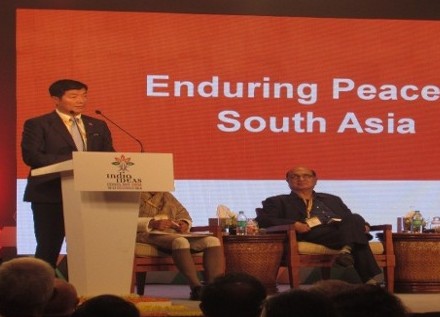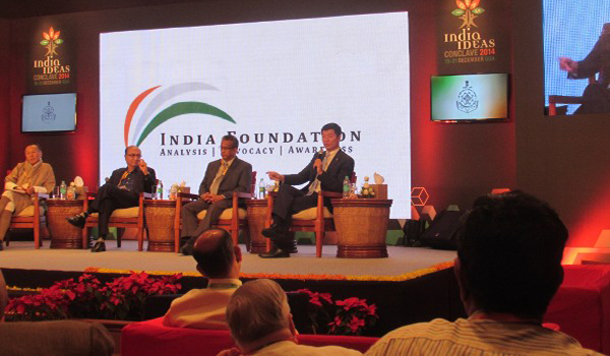 Sikyong Dr Lobsang Sangay was invited to speak at the reputable “India Ideas Conclave – 2014”, which professes to be India’s most eclectic and thought-provoking platform for global thought leaders and renowned subject matter experts to discuss cutting edge ideas in various fields of human development. The Conclave aims to bring together brilliant minds across all disciplines that impact human affairs. More than 70 eminent scholars and thinkers addressed a select group of over 400 participants that included eminent academics, global CEOs, renowned scientists, technologists, senior political thinkers and practitioners and media luminaries. The theme this year was “Integral Human Development”.
Sikyong Dr Lobsang Sangay was invited to speak at the reputable “India Ideas Conclave – 2014”, which professes to be India’s most eclectic and thought-provoking platform for global thought leaders and renowned subject matter experts to discuss cutting edge ideas in various fields of human development. The Conclave aims to bring together brilliant minds across all disciplines that impact human affairs. More than 70 eminent scholars and thinkers addressed a select group of over 400 participants that included eminent academics, global CEOs, renowned scientists, technologists, senior political thinkers and practitioners and media luminaries. The theme this year was “Integral Human Development”.
Sikyong spoke on the second day during the session “Enduring Peace in South Asia” along with Bhutan’s former Prime Minister, Dasho Jigme Thinley and Sri Lankan Ambassador Prasad.
During his speech, Dr Sangay emphasised the crucial role that Tibet plays in the maintenance of peace in South Asia by stating “Buddhism was introduced to Tibet by the highly acclaimed Indian masters of the Nalanda tradition. A culture of peace prevailed coinciding with the pacification of the military empire of Tibet. Historically Tibet maintained a neutral status, and at times followed an isolationist and hermetic policy.”
He continued, “However, Tibet was caught in the geopolitics of the Great Game and was occupied by China in 1950. The occupation brought China and India, the two largest populated countries of the world, face to face for the first time in history. In 1962 India-China war broke out. Since then tensions remained between the two countries with border incursions occurring every year.
“Environmentally, Tibet also known as the third pole is the main source of ten major rivers of Asia and the plateau affects the climate and monsoon patterns in South and South-east Asia. The Middle-Way Approach of the Central Tibetan Administration is a win-win proposition for both China and Tibet.”
The three-day India Ideas Conclave 2014 concluded with a closing speech by the Foreign Minister of India, Ms Sushma Swaraj, and the Governor of Goa, Ms Mridula Sinha.
The conclave was organised by the India Foundation and was attended by diplomats, parliamentarians, educators, journalists, security experts, and the past heads of government of Lithuania, Jordan, Slovenia, and the Netherlands. The opening session consisted of an audience that included Shri Laxmikant Parsekar, the Chief Minister of Goa, and the Union Ministers of Defense, Commerce and Industry, Railways, Power and Energy, and Finance.





 Print
Print Email
Email